Sanskrit Influence on Indus Scrips Journal V1.0
Sanskrit Influence on the Indus Script
Author: Jeyakumar Ramasami
Email: info@indusscriptsdeciphered.com
Date: September 2025
Abstract
There is a conflicting opinion about the language of the Indus script. Some linguists believe it was based on the Indo-European language; another group claims it was based on the Dravidian language. My findings indicate that the Indus script was a composite language, comprising elements of the Indo-European (IE) language and Egyptian hieroglyphics. I refer to the influence of hieroglyphics as a Dravidian component. My decipherment effort so far reveals that many Indus symbols resemble Egyptian hieroglyphs, and there is a close connection between these two writing systems. The Egyptian priests and scribes likely contributed to the development of the Indus script, along with Iranian and Vedic priests. The Indus symbols show a composite culture of all three great civilisations. This paper argues for a moderate interpretation of Sanskrit influence within a hybrid cultural context.
Keywords: Indus script, Sanskrit, Dravidian, hieroglyphics, archaeology, Vedic culture.
Introduction
The debate regarding the language of the Indus script remains unresolved. Scholars have taken polarised positions, identifying either Indo-European or Dravidian as the root. This paper presents evidence that the script reflects a composite culture, influenced by Indo-European, Dravidian, and Egyptian traditions.
Literature Review
Iravatham Mahadevan proposed a reconciliatory view, suggesting that although the Indus scripts belong to the Dravidian language family, they can be better understood in the context of Vedic literature. He emphasised the limited nature of Aryan migration and the coexistence of cultural elements. (1) Rajesh Rao examined the statistical structure of Indus signs and concluded they share properties of linguistic systems, reinforcing the notion of meaningful communication. (2) In contrast, Farmer, Sproat, and Witzel denied that the Indus script constitutes a linguistic system at all. (3)
Research work of Iravatham Mahadevan
After years of interpreting Indus symbols based on Dravidian ideas, Mahadevan finally took a reconciliatory approach in 2014. He stated that, although the Indus scripts belong to the Dravidian language, they can be better understood through the evidence available in the Vedic literature. The Dravidian ideas had declined after the entry of Indo-European people into the Indus Valley, and the symbols of the Indus script cannot be read through the present-day Tamil language. Iravatham Mahadevan proposed interpreting the Indus script through Vedic literary evidence in his 2014 research paper. Mahadevan states that the incoming Aryans had not entirely wiped out the Dravidian ideas because the invaders were not in large numbers. They likely entered the Indian subcontinent in small groups over several years. It’s not a massive invasion. (1)
Mahadevan theorised that the Aryan-speaking people migrated into South Asia in the second millennium BC in the wake of the decline and the eventual collapse of the Indus Civilisation. By then, the Indus polity could have disintegrated into numerous smaller communities without effective central authority or leadership. The incoming Aryans were in much smaller numbers but could achieve elite dominance over the local population due to their better mobility and advanced weaponry. (1)
Mahadevan suggests that some segments of the Indus population, unwilling to be assimilated into the new social order, might have migrated eastward and southward. However, most people would have stayed back in the Indus Valley itself. Over time, the local population would have transitioned to the dominant Aryan dialect. Thus, the Indo-Aryan society was born, speaking the Indo-Aryan language but retaining much of the Pre-Aryan Dravidian cultural elements in religious practices, agriculture, craft traditions, and social institutions. (1)
Mahadevan suggests that it is crucial to recognise the Vedic and the earliest Tamil cultures as two distinct parallels, which flourished in regions and at times far removed from each other, with no possibility of mutual influence. Any common feature between the Vedic and Old Tamil can only be traced to their common descent from the same source, namely, the Indus Civilisation. I fully agree with the view suggested by Mahadevan; it is a moderate view and reasonably explains the Aryan and Dravidian conflict issue. (1)
Cypher-war
In 2009, Rajesh Rao published a study examining the sequential structure of the Indus script, specifically the likelihood that particular symbols follow or precede other signs. In most linguistic systems, words or symbols follow each other semi-predictably. There are specific dictating sentence structures, but also a fair amount of flexibility. Researchers refer to this semi-predictability as “conditional entropy.” Rajesh Rao and his colleagues calculated the likelihood of one symbol following another in an intentional order. (2)
They compared the conditional entropy of the Indus script to that of known linguistic systems, such as Vedic Sanskrit, and known non-linguistic systems, including human DNA sequences. They found that the Indus script was much more similar to the linguistic systems of the time. Rao states that it is not proof that the symbols are encoding a language, but it is additional evidence that these symbols are not just random contact and the pairing of arbitrary signs. Rao further states that the Indus script follows patterns consistent with the characters coding a language”. (2) But not everyone agrees that the script is a language. In 2004, a paper by Steve Farmer, Richard Sproat, and Michael Witzel claimed that the Indus script was not a language. (3)
Another challenge to the script’s decipherment is a classic one: expenses needed for the research work – money. Wells believes that until universities and funding agencies make a concerted effort to foster the study of the Indus script, little headway will be made. “It has to be a cooperative effort, it has to be funded, and it has to have a home,” says Wells. (4) Bryan Wells has accurately pointed out the problem with Indus script research. It is not because of intellectual deficiency on the part of Indians that the Indus script remains undeciphered. However, this is due to a lack of funding for this research. If enough funds are made available to some research group, this Indus code can be easily broken. However, unfortunately, the Indian government has shown little interest in deciphering the Indus script.
The Indus script had remained undeciphered for a long time. There are some valid reasons for that. The Indus Valley civilisation flourished a long time ago, approximately 4000 years ago. The time gap is enormous, and modern-day people cannot visualise the context in which these seals were prepared and what is written over them. The earliest Indus archaeologists made the fundamental mistake of identifying these excavation sites as “Megapolises“, whereas, in reality, they were “Necropolises”. This basic mistake made it challenging to determine and recognise the role of seals and their inscriptions. (5)
The Indus seals show characteristics of the priestly way of writing. The words were written in such a way that an ordinary person would not understand them, but another priest could read the inscription. This way of writing could have granted priests extraordinary powers, and they could have claimed that the words possessed magical and supernatural properties. The purpose of the seals appears to be related to magic, mysticism, and animal sacrifice.
Absence of the Rosetta Stone
The Indus seal inscriptions have many decipherments, some based on the Dravidian language and others on the Aryan language. But none of the decipherers could prove anything convincingly because there is no reference point. The ancient Egyptian hieroglyphic code was broken using the trilingual inscription on the Rosetta Stone. However, no such bilingual records are available for the Indus scripts to date. After working on this issue for many years, I found that the Indus script follows the Egyptian hieroglyphic writing style, and many symbols are common to both scripts. So, the ‘requirement of Rosetta stone’ argument is no longer applicable.
The lack of a bilingual text is not an insurmountable obstacle; some scripts have been deciphered without them. Ugarit script writings were found in Syria (in 1929). Several words were only a single letter long, suggesting the Ugarit script used a consonantal alphabet written without vowels (as was the case with other early Semitic alphabets such as Hebrew). Applying letter frequency analysis to the problem, Hans Bauer tentatively assigned values to two Ugaritic script letters that were commonly used in the language. Bauer then used the assignments to search the texts for the expected Semitic word for “king”. Proceeding along these lines, he found the words for “son” and the name of the god “Baal”, eventually determining the values of several other letters. My experience with the Indus script is also similar. (6)
Methodology
This research work is based on positional analysis and frequency analysis of symbols used by Iravatham Mahadevan. The approach adopted here involves comparative symbol analysis, drawing parallels between Indus symbols, Egyptian hieroglyphs, and Vedic ritual terminology. By aligning pictorial inscriptions with known religious and cultural practices, I propose readings that reveal a composite language involving both Dravidian and Sanskrit linguistic influence.
Findings
- Common Symbols: For instance, the fish symbol (Matsya) stands for both a phonetic value and an ideographic value. The Kavu symbol denotes sacrifice. These two symbols together form the basic foundation of the Indus script. These symbols demonstrate the influence of both the Dravidian language and Sanskrit.
- Ritual Significance: Many seals point to Pithru Karma rituals and sacrificial ceremonies resembling Kerala’s Karkida Vavu. These connect Indus practices with later Vedic traditions.
- Ideo-graphic Writing: Indus seals exhibit an ideographic way of writing. However, a few cases of syllabic writing are also seen. The word Karma is presented in a logo-syllabic form, with phonetic elements traceable to Sanskrit.
- Vedic Influence: Terms such as Mams-Astaka and Jyotir-stoma Yajna appear in inscriptions, suggesting direct influence from Vedic ritual vocabulary.
Commonly used symbols are identified.
The first symbol I recognised was the “fish” symbol [ ] (Matsya), which stood for the “Ma” sound, as well as the concept of the “dead man’s soul” (Pithru/Manes/ancestor). (7) The second symbol identified was the ‘Kavu’ symbol
, representing the idea of ‘Sacrifice.’ (8) These two symbols were the most frequently used symbols of the Indus script. Identifying these two symbols gave me a breakthrough, and my experience was similar to that of Hans Bauer.
The direction of reading the inscriptions
Another major problem in reading the Indus inscriptions is the direction from which the inscription should be read. There are many ways of writing: left to right, right to left, or the Boustrophedon way. While reading the Indus inscription, the reading should start from the side the animal faces. This way of writing was the primary convention of the Egyptian hieroglyphic writers; Indus scribes meticulously followed the same. This feature shows the influence of ancient Egyptian civilisation on the Indus civilisation. (9)
Indus inscriptions are written in an ‘Ideogram’ (Idea)
Decipherment efforts show that the Indus inscriptions are written mainly in the ‘Ideogram‘ way. However, a few cases of the ‘logo syllabic way of writing also exist. A notable example is the word ‘Pithru-Karma’, which is frequently used in Indus inscriptions. This word is written in an ‘ideographic way’ and ‘logo-syllabic way’. Iravatham Mahadevan first advocated the ‘ideographic way’ of interpreting Indus Valley civilisation symbols in 2014. (1) However, his idea that those symbols communicated trade transactions of the Dravidian people has not progressed much.
Sacrifice to satisfy the souls of Pithrus (Ancestors)
Figure SEQ Figure \* ARABIC 30: Inscription showing the words ‘Pithru Karma’
Figure Inscription showing the word “Pithru Karma”.
The majority of the seals are oriented towards the Pithru Karma ceremony. This finding substantiates my earlier theory that Indus excavation sites are burial grounds, not megapolises as popularly imagined.
| Ancestors (This symbol looks like an older man walking with a stick.) |
Upraised Hands–symbol with a fish symbol inside (composite symbol) |
Yajna symbol. It resembles the modern Hindi full-stop symbol. | Mountain | God with a stick |
| (Pithru) | Ka+ma =
Karma |
Yajna | Indicates “Kur”, the nether world | Messenger God with the stick as his weapon |
The Mountain symbol represents the ‘Kur’, the nether world. (88) The outcome of the analysis is that the inscription reads as ‘Pithru–Karma–netherworld (Kur)– messenger god’. The ceremony was carried out to appease the God of death, and the sacrificial offerings were sent through the messenger god. (10) “Pithru–Karma” means the annual death ceremony (Thithi) during which rituals are carried out with Yajna. In modern days, “Fire sacrifices” are conducted with vegetarian sacrificial materials. However, it appears that an animal sacrifice was the primary component of the “Yajna” ceremony in ancient times. (11)
The upraised symbol indicates the dead person’s ‘Ka’ (soul). The fish symbol (ma) inside the ‘ka’ symbol becomes a composite symbol with the syllable sound of ‘Karma.’ (12) One crucial point to note here is that the word ‘Karma’ is written in the Sanskrit language, not a Dravidian language. The ‘Ma’ sound in the word ‘karma’ is given by the Sanskrit word ‘Matsya’ to the fish symbol. If it had been a Dravidian word, it would have become ‘Karmee’, which has no meaning. (The fish is called ‘Meen’ in the Dravidian language). This pictogram is the best example supporting my ‘Sanskrit theory’. This pictogram has been written in a logo-syllabic way.
Ritual recorded in the seal – Karkida Vavu
Karkida, the last month of the Malayalam calendar, which corresponds to July and August, has some religious significance for Hindus. Karkidaka Vavu Bali, also known as Bali, is a sacrificial ritual performed in memory of the departed ancestors. On the day of vavu or Amavasya (new moon day), people belonging to the Hindu religion gather on the riverbanks and beaches to offer ‘Bali’. Bali means “sacrifice”; in the olden days, blood sacrifices would have been carried out, but nowadays, no blood sacrifices are performed; only vegetable materials are placed as offerings to the gods. People believe that the departed souls attain `moksha (liberation) if the ritualistic homage is performed on Karkidaka vavu. (13)
Men, women and children offer Bali to their ancestors. Thousands of people throng the beach on that day. Other ingredients of the Pooja are cooked rice, water, etc. Before commencing the ritual, all these materials are placed on a banana leaf. Men wear only a dhoti during the ceremony, and the offerings are made on a banana leaf, which will be finally immersed in the seawater. (13)
Importance of Karkida Vavu Bali
Hindu customs place great importance on rituals to be performed after death. According to Hindu custom, when a family member dies, the younger ones must perform Bali (also known as Pithru Tharpanam) to liberate the soul from the shackles of this worldly life, thereby helping the soul achieve eternal peace. The Bali carried out on Karkidaka Vavu day is called Vavu Bali, which is greatly important. The regular custom is to perform the ritual based on the calculations of the star of the day when a family member has passed away. However, Karkidaka Vavu Bali is performed regardless of these calculations. The rites are conducted according to Hindu custom and performed on the beaches and waterways. (13)
Pazu – Karkida – Dvikavu
The two seals given above are similar in one way. Although the pictures depicted are different, the inscriptions remain the same. These inscriptions may look different, but if they are properly analysed, it can be seen that both inscriptions are variations of the same.
The only difference between these inscriptions is that the Man’s logo appears at the end of the seal inscription(A). The same symbol of “Man” appears at the beginning of the inscription on the seal (B). The conclusion is that the subject matter of the inscriptions is the same in both seals; the positional change of the “Man” logo does not alter the meaning of the inscription.
More information has been obtained during the analysis process. The third logo in the seal (A) is not visible. But, considering the repetition of the same logos and sequence of logos, it can be assumed that the missing logo is ‘dvi-Kavu’ 
Analysis table for the inscription in the seal (A)
| 1 | 2 | 3 | 4 | 5 | 6 |
 |
 |
||||
| man | crab | crab | ‘Kavu’ symbol with the number two symbol inserted in between | fish | Kavu-symbol |
| Man sacrificed | Both these crab symbols (symbols 2 and 3) should be read together as ‘Karkida ritual. | Both these crab symbols (symbols 2 and 3) should be read together as ‘Karkida ritual. | Dvi-Kavu means it is a sacrifice for two entities: the gods and the Pithrus. | ‘Matsya’ indicates the Pithru. | ‘Kavu’ in the Tamil language means ’sacrifice.’ |
The resulting sentence is “Pazu-Karkida-Dvikavu-Pithru-sacrifice.” This sentence refers to a ceremony similar to Kerala’s “Karkida Vavu,” as described above. This ceremony is devoted explicitly to pleasing “Pithrus”(ancestors). The conclusion is that the ceremony mentioned on the above-mentioned Indus seal is the same as the “Pithru Ceremonies” followed throughout India. However, the specific name of the ceremony, ‘Karkida-Kavu,’ is still used only in Kerala.
Analysis table for the inscription in the seal (B)
| 1 | 2 | 3 | 4 | 5 | 6 |
| crab | The Crab symbol with a stick symbol across gives the ‘da’ sound here | Kavu- symbol | fish | Kavu | man |
| Karkida ritual. These symbols (symbols 1 and 2) should be read together as Karkida. | Karkida ritual. These symbols (symbols 1 and 2) should be read together as Karkida. | Kavu – may be single Kavu (Or) double Kavu | The fish symbol means ‘Pithru/manes/ ancestor’ here. (85) | Kavu | Man sacrificed |
It could be read as ‘Karkida –Kavu –Pithru–Kavu –Pazu’. The word Karkida may refer to a ritual similar to the ‘Karkida Vavu’ of Kerala, which is dedicated to appeasing the ‘Pithrus’ (ancestors). The first two graphemes should be read together as ‘Karkida’, indicating ‘Karkida ritual’. Finally, the meaning is the same as in the above-given seal A. The only difference is that the ‘Danda’ (Stick) symbol has been introduced in this inscription. The stick symbol clarifies the word as ‘Karkida’. The term ‘Danda’ is another example of how the Sanskrit language was used in the Indus Valley period.
The term ‘Karkida Kavu’ has been transformed into ‘Karkida Vavu’ in present-day Kerala. This transformation may have occurred primarily after the introduction of the Buddhist concept of ‘Non-violence’ and a general aversion towards animal sacrifice. It looks like those Hindu priests had stopped the animal sacrifice but continued with the ritual to please Pithrus (ancestors).
Mams-Astaka
The best example of the ‘Vedic ritual’ in the Indus inscription comes from the word ‘Astaka’. This term is frequently used in many Indus inscriptions and is employed in various permutations and combinations. The word ‘Mams’ means ‘meat’ in Sanskrit. The word ‘mAMsASTakA’ means the forenoon of the 8th day in the dark half of the month Māgha; on that day, meat or flesh was offered to deceased ancestors. (14)
Figure Inscription showing the symbol of “Leaf-messenger”.
| 1 | 2 | 3 | 4 | 5 | 6 | 7 |
 |
 |
 |
||||
| Grihapatya Yajna | Yajna | Karkida | Matsya | Matsya | Messenger | Kavu means sacrifice in Tamil |
| householder’s fire | Yajna | Karkida month ritual/sacrifice | Fish with horns indicates the second-generation Pithru | Fish with a dot show first-generation Pithru | Leaf messenger | The sacrifice of a bull was made |
This is a ‘Vedic ritual’ and shows the influence of ‘Vedic culture’ in the Indus Valley civilisation. The inscription reads, “Grihapatya–Yajna–Karkida month–leaf messenger–Kavu”. The sentence means,” Householder’s Yajna was performed in the Karkida month for two generations of Pithru, and a leaf messenger was employed to carry the sacrificed items to the gods. Two consecutive symbols of ‘fish’ stand for two generations of Pithrus. The leaf symbol indicates the ‘leaf-messenger’, discussed in the following paragraph.
Leaf-messenger symbolism
The figure beside indicates a god or man carrying a stick and in a walking position. He is also shaped like a Pipal (or Betel) leaf. It could be a god or an ordinary man. All the Indus seal inscription symbols can be easily interpreted in terms of the Vedic rituals mentioned in the “Grihya-Sutra.” Reading the Grihya-Sutra suggests that the Vedic people employed such a messenger to convey their sacrifices to the gods or Pithrus (Manes). (15)
Agni-stoma / Jyotir-stoma Yajna — for uplifting the dead man’s soul to heaven
The above two graphemes are very peculiar and difficult to explain. At least the symbol of the ladder is easy to identify. However, the second symbol is formidable to ascertain. Fortunately, the more challenging aspect is to interpret the best and most precise information that emerges from such a grapheme. These graphemes indicate the idea of ‘raising the dead man’s soul to heaven. The ‘ladder’ symbolises the ascending pathway to heaven. Wherever such an ‘ideogram’ appears in Indus inscriptions, such an ideogram gives the meaning of ‘Jyotir stoma Yajna’. (16) This Yajna, performed to uplift the soul, is typical of ‘Vedic civilisation’. These Vedic ideas expressed in ‘Indus seal inscriptions’ support my ‘Sanskrit language theory’.
Discussion
The evidence highlights a multi-layered script, reflecting religious rituals and ancestor worship, rather than trade or administration. Sanskrit elements, particularly in ritual terminology, strongly suggest Indo-European contributions. This does not negate Dravidian or Egyptian influences but instead positions the Indus script as a cultural synthesis.
Conclusion
The Indus script reflects a composite civilisation, synthesising Vedic, Dravidian, and Egyptian elements. The presence of Sanskrit ritual terms demonstrates Indo-European linguistic influence, offering a resolution to the Aryan-Dravidian debate. Rather than viewing civilisation through binaries, recognising its hybrid nature may provide a more accurate understanding of its legacy.
References
References
1. Mahadevan, Iravatham. Dravidian proof of the Indus script Via Rig Veda: A case study (Bulletin No.4). Chennai: Indus Research Centre, Roja Muthiah Research Library, 2014.
2. Rajesh.P.N.Rao, et al. [Online] 2009. https://homes.cs.washington.edu/~rao/ScienceIndus.pdf.
3. Farmer, Steve, Witzel, Michael and Richard Sproat. The collapse of the Indus script thesis: The myth of a literary Harappan civilisation. /www.safarmer.com/ Electronic journal of Vedic studies. [Online] 2009. http://www.safarmer.com/fsw2.pdf.
4. Bryan.K.Wells. Archaeology: A different take on Indus evidence. www.nature.com/nature/journal/. [Online] 2016. http://www.nature.com/nature/journal/v532/n7599/full/532313e.html.
5. Jeyakumar(Necropolis). Necropolis theory on the Indus Valley Civilisation. Academia.edu. [Online] 2009. https://www.academia.edu/12673473/Necropolis_theory_on_Indus_Valley_Civilization.
6. Hans Bauer. Straightdope.com. [Online] https://www.straightdope.com/21343350/how-come-we-can-t-decipher-the-indus-script.
7. Jeyakumar, R. [Online] 2015. https://www.academia.edu/19550772/Fish_symbolism_in_Indus_Valley_Civilization.
8. —. [Online] 2014. https://www.academia.edu/8612715/Kavu_symbol_indicates_sacrifice_in_Indus_inscriptions.
9. —. [Online] 2015. https://www.academia.edu/43722883/Egyptian_hieroglyphics_influence_on_Indus_script.
10. —. [Online] 2015. https://www.academia.edu/19142411/Mountain_symbol_indicates_the_land_of_the_dead_nether_world_.
11. —. [Online] 2015. https://www.academia.edu/40491244/Tilak_symbol_indicates_pithru_karma_ceremony.
12. —. [Online] 2015. https://www.academia.edu/50838749/Dictionary_of_Indus_script_symbols_as_per_Jeyakumar.
13. Keralatourism.org. [Online] https://www.keralatourism.org/event/karkidaka-vavu-bali/64/.
14. Jeyakumar.R. [Online] 2015. https://www.academia.edu/11715645/Astaka_symbols_indicates_the_Mams_Astaka_ritual_in_Indus_script.
15. —. [Online] 2015. https://www.academia.edu/19742902/Leaf_messenger_symbolism_in_Indus_script.
16. —. [Online] 2015. https://www.academia.edu/10969959/Agnistoma_and_Jyotistoma_Yajna_for_uplifting_the_dead_mans_soul_to_heaven.


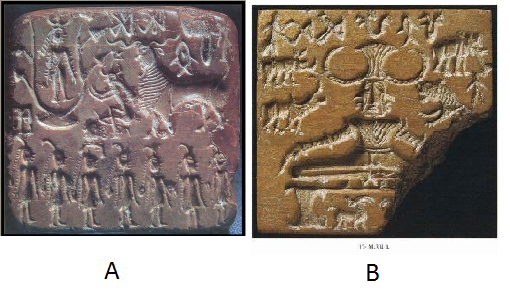
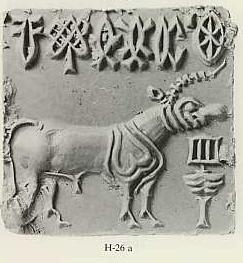

 God with forked hands could be Yama.
God with forked hands could be Yama.





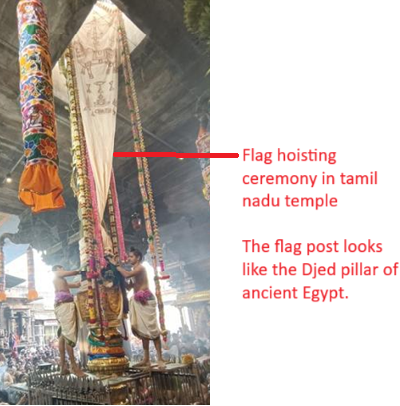 This picture shows the flag hoisting ceremony in Tamil Nadu temples, which looks very similar to the Djed erection in Egyptian temples. This ceremony of Tamil Nadu temples is identical to the ceremony of Egypt. It is further evidence that the origin of South Indian culture is from ancient Egypt.
This picture shows the flag hoisting ceremony in Tamil Nadu temples, which looks very similar to the Djed erection in Egyptian temples. This ceremony of Tamil Nadu temples is identical to the ceremony of Egypt. It is further evidence that the origin of South Indian culture is from ancient Egypt.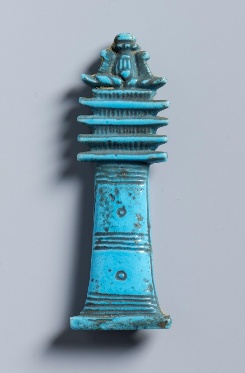 Usage as amulets
Usage as amulets


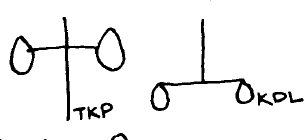
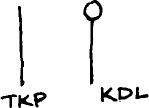

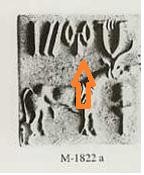 Two uterus symbols.
Two uterus symbols.
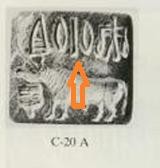 A variant of the two-uterus symbol.
A variant of the two-uterus symbol. Another variant of the noose symbol.
Another variant of the noose symbol.